Luxembourg

The Grand Duchy of Luxembourg, a constitutional monarchy, is an independent sovereign state, in the northwest reaches of the heart of Europe, southeast of Belgium and wedged between France and Germany. This tiny country is only 84 km long and 52 km wide, encompassing an area of 2586 square kilometres.
Letzeburgesch is the official language but most people speak French and German and even English. The capital, Luxembourg City, is centred in southern Luxembourg, and is 190km away from Brussels.
My Trip
- 2004 April 03 (1 Day): While I was in Brussels, Belgium, visited the Luxembourg City on a one day trip.
Visited Places/Attractions
- Musée de la Banque (State Savings Bank)
- Avenue de la Liberté (Arbed Building)
- Adolphe Bridge
- Petrusse River
- Constitution Square
- Petrusse Valley
- Gelle Fra Memorial
- Casemates du Bock (The Casemates)
- Cercle Cité (City Palace)
- Palais Grand-Ducal (Grand Ducal Palace)
- Town Hall
- Chemin de la Corniche
- Grund
- Bock promontory
- Luxemburgo-Passerelle (Viaduct)
Travelogue
Below is an account of my one-day trip to Luxembourg City on 2004 April 03, Saturday, while I was working and living in Brussels, Belgium.
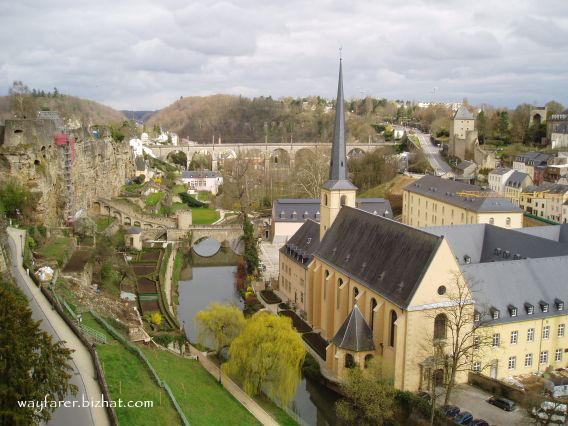
At early morning started the trip from my room in Dreve Pittoresque. The first bus to the city of Brussels came after 06:30 AM and I arrived at the Gare du Midi (South Railway Station) after 7. There were no super speed trains running to Luxembourg. The cost of weekend return ticket in the second class was 31.20 Euros only. Even though it was a normal international train, the journey was very comfortable with its facilities matching high standards. It took exactly 3 hours and I landed at the Luxembourg station after 10:30 AM.
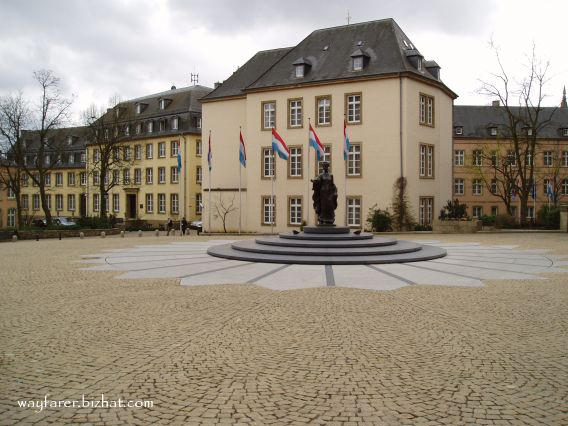
Tourist information office was just outside the station. The officer gave me a city map with all attractions marked on it and another leaflet explaining all these in detail including photos. He showed me the position of station in the map and said it's easy to cover all these attractions on foot. That was interesting and after analysing the map and leaflet in detail I started my walk. At times I got lost, but was able to be back on track after few wanderings checking the street names and identifying the landmarks as shown in the leaflet. The temperature was around 10 degrees and was comfortable for walking and there were many other tourists also exploring the city by walk.
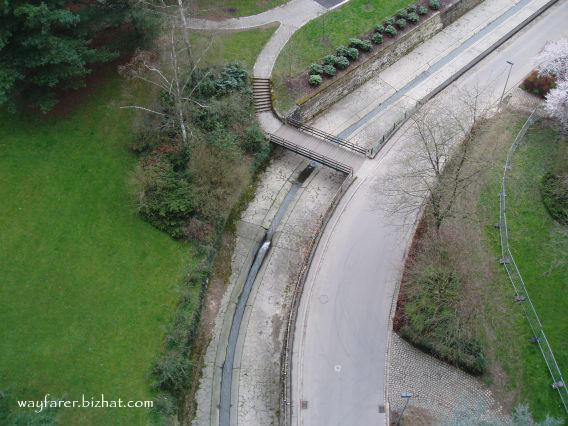
This city was founded in the year 963 on a rocky outcrop known as the Bock, by Sigefroid, Count of Ardennes. The city sits high on a promontory (natural elevation) overlooking the Petrusse and Alzette Valleys. After seeing some important old buildings like State Savings Bank and Arbed Building I arrived at Adolphe Bridge, erected during 1900-1903 with the biggest arch stone in the world at that time with a span of 85 m. I could see the very narrow Petrusse River under this bridge.
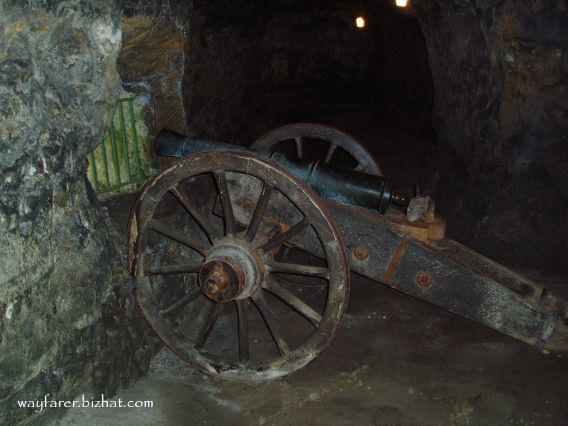
After the bridge it was Constitution Square, put up on the ancient Beck bastion, the projecting part of the fortification around city. It offered a superb view over the Petrusse Valley and the Adolphe Bridge. Gelle Fra Memorial, was there, set up originally in 1923 to commemorate the Luxembourgers who perished in the First World War. This was destroyed during the Second World War but was rebuilt again after that. A board says "This is to remind us of the brutal act of Nazi occupant, who, in destroying this monument on October 21st, 1940, turned it into a symbol of our freedom, thus sparking off the desperate resistance of a deeply humiliated nation whose only weapon was its bravery".
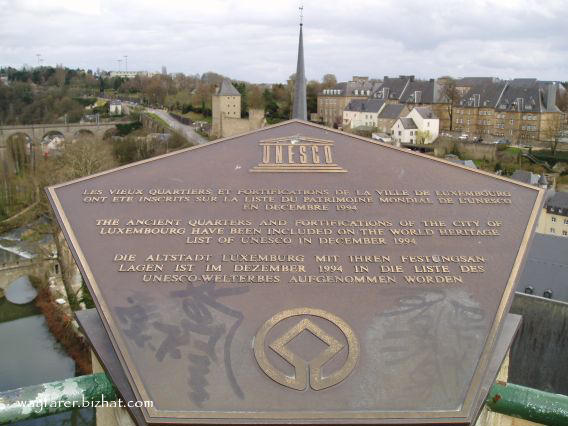
The most amazing attraction was The Casemates. These are a honeycomb of underground chambers and connecting tunnels built under the city, for defence works. Some are as much as 40m deep and there were hundreds of steps down to reach them from surface level. There was a guided tour and the guide took the visitors through these chambers and tunnels, explaining its history. During the old days, the armies of different nations, which occupied this country and fought each other, extensively used them. Some chambers were having openings to the valley and canons were placed there to attack the enemies. The casemates were soon the envy of Europe's warmongers and they earned Luxembourg the nickname 'Gibraltar of the North'. The casemates were also used as bomb shelters for around 35,000 people during WWI and WWII. From the top we followed the steps to reach until the bottom of the valley and then climbed back to top. The casemates and other remains of the old fortification are listed by UNESCO as a World Heritage Site.
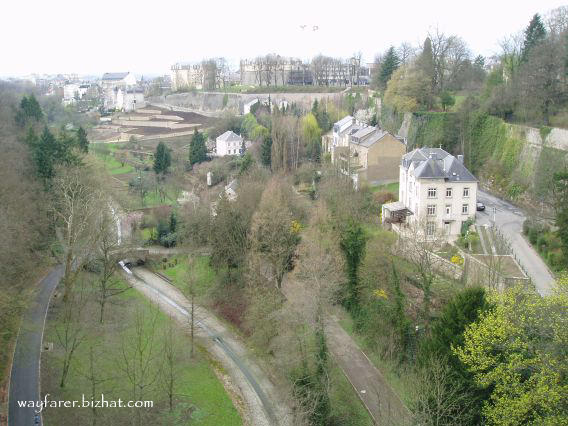
Next visit was to the city centre to see City Palace, Grand Ducal Palace, Town Hall and some important statues and squares.
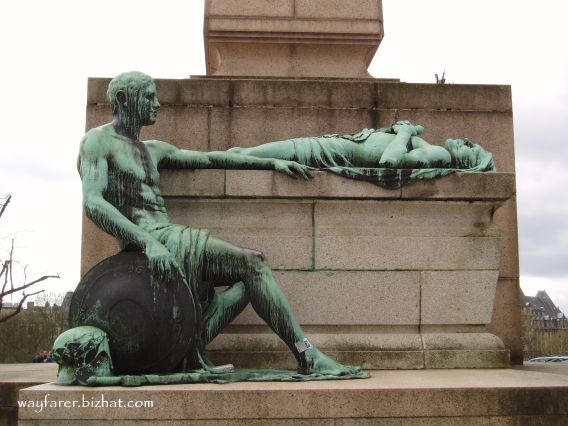
After that, went to 'Chemin de la Corniche', known as 'Most beautiful balcony of Europe'. It is a walkway through the edge of upper town providing superb panoramas of both the valleys and the Grund, or lower town, a picturesque, cobble stoned quarter. Continued my walk to the 'Bock promontory', which also offered incomparable views of lower town and remains of centuries old forts and walls. Descended the steep tracks to reach the valley and enjoyed a closer look of Alzette river and its neighbourhood. Then it started drizzling, and I rushed back to upper town and walked all the way to the railway station, crossing Viaduct, a mighty bridge with 24 arches. It was 5 PM when I reached station, and after the continuous walk for more than 5 hours, I was really tired. Boarded the train back to Brussels and reached back in my room before 9 PM.
Pages
- Argentina
- Armenia
- Austria
- Azerbaijan
- Bahrain
- Belgium
- Bhutan
- Brazil
- Egypt
- Estonia
- Ethiopia
- Finland
- France
- Georgia
- Germany
- India
- Iran
- Italy
- Jordan
- Kenya
- Latvia
- Liechtenstein
- Luxembourg
- Monaco
- Nepal
- Netherlands
- Nigeria
- Norway
- Oman
- Peru
- Qatar
- Romania
- Saudi Arabia
- Sri Lanka
- Sweden
- Switzerland
- Tanzania
- Thailand
- Turkey
- UAE
- UK
- USA
- Vatican City
- Vietnam
